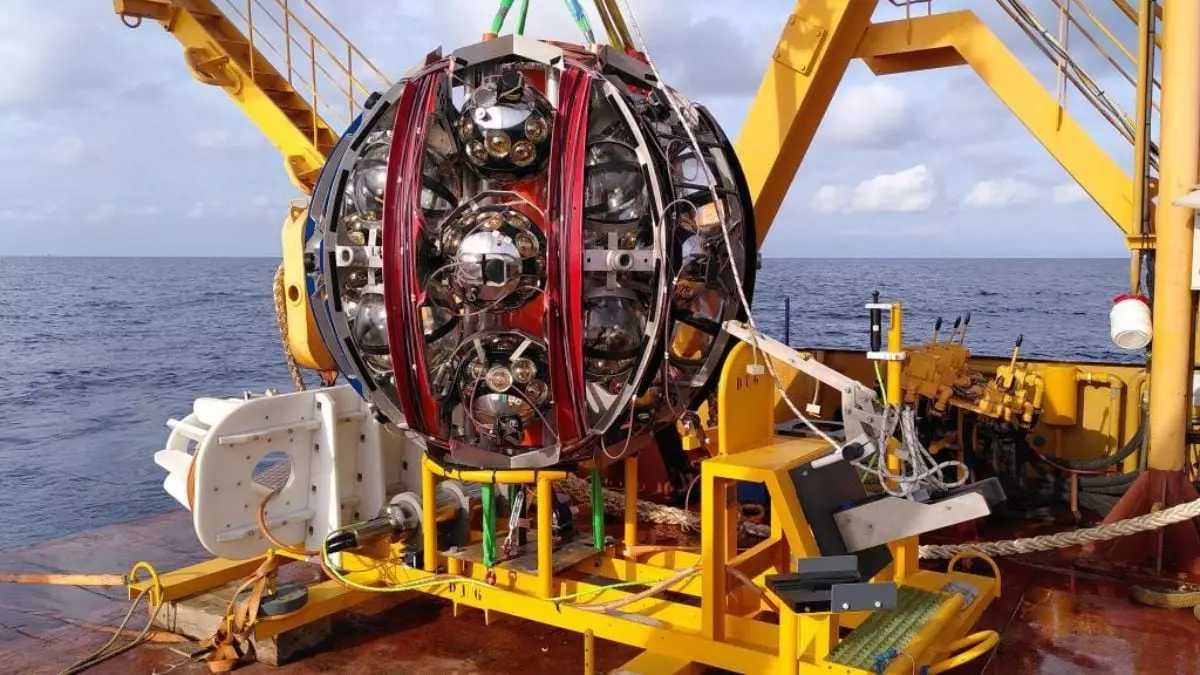In a groundbreaking initiative taking place within the depths of the Mediterranean Sea, scientists are working to install the KM3NeT, an advanced underwater neutrino telescope. This ambitious project seeks to unravel the mysteries behind high-energy neutrinos—elusive subatomic particles that have intrigued physicists and astronomers alike. What distinguishes KM3NeT from traditional astronomical instruments is its ingenious method of detecting neutrinos. Instead of relying on light from distant celestial bodies, KM3NeT captures the faint light produced when neutrinos collide with seawater.
The KM3NeT project is an expansive endeavor, stretching over a cubic kilometer beneath the Mediterranean waters. It comprises two separate telescopes, each integrating glass spheres filled with photomultiplier tubes that are pivotal for brightness detection. According to physicist Simone Biagi from Italy’s National Institute for Nuclear Physics, these telescopes are deployed deep underwater, several kilometers below the surface, leveraging the unique properties of the aquatic environment to gather cosmic data.
Deploying the telescopes involves meticulously suspending thousands of sensors, which resemble strands of pearls, extending up to 700 meters. These delicate strands are gradually released to unfold across the seabed. A specialized remotely operated submersible plays a critical role in this operation, ensuring precise connections and performing detailed inspections of the setup to mitigate risks before the system becomes fully operational.
The KM3NeT consists of two strategically placed telescopes: one near Sicily, targeting high-energy neutrinos from outer space, and the other off the French coast, focusing on atmospheric neutrinos—a category that encompasses neutrinos generated within Earth’s atmosphere. This dual approach allows researchers to study neutrino oscillations, a phenomenon critical to understanding the transformation of neutrinos between varieties. Such knowledge not only sheds light on particle physics but could also inform theories surrounding the fundamental structure of the universe.
The path to successful deployment is laden with obstacles. Scientists contend with the unforgiving conditions of the Mediterranean Sea, including unpredictable weather and complex logistics. As deployment campaigns typically occur once a year and span about a month, researchers operate under intense pressure. The stakes are high: if any issues arise during deployment, rectifying them post-installation is virtually impossible, necessitating precise execution at every phase of the process.
Despite the project’s early-stage challenges, the KM3NeT telescopes are already beginning to provide invaluable data. Early findings are enhancing our understanding of quantum gravity effects and providing insights into neutrino behavior that were previously unattainable. As the KM3NeT initiative progresses, it promises to unlock deeper understandings of both cosmic phenomena and fundamental physics, paving the way for future breakthroughs in our quest to comprehend the universe.
KM3NeT stands as a testament to human ingenuity and perseverance, harnessing cutting-edge technology to explore the enigma of neutrinos—an exploration that may fundamentally alter our understanding of the cosmos.

